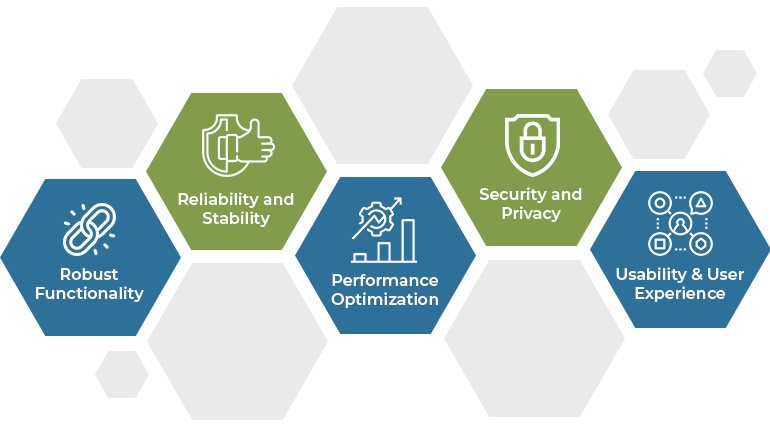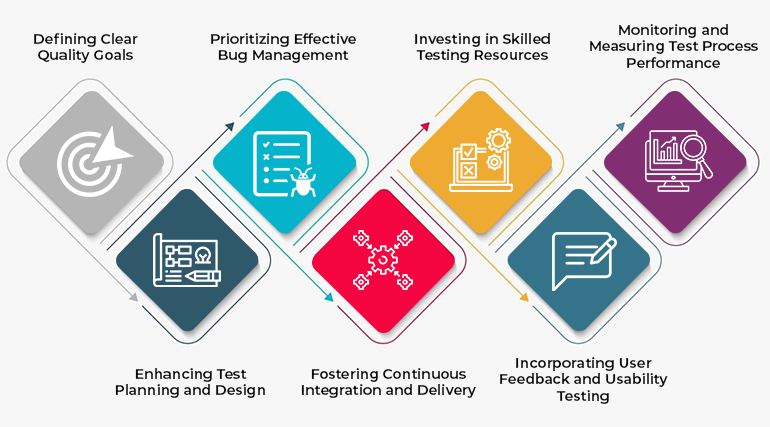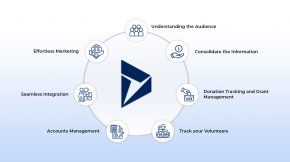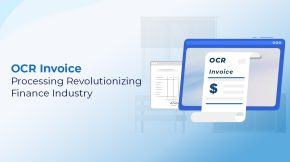From Bugs to Brilliance: A Roadmap to Achieving Exceptional Software Testing Quality
Did you know that software defects cost businesses a staggering $1.7 trillion annually? It’s time to turn the tide and unlock the secrets to exceptional software testing quality.
In this blog post, we reveal seven practical steps to improve your software quality and revolutionize your testing process. From techniques for ensuring software quality to QA process improvement ideas, get ready to supercharge your testing game and deliver flawless software experiences. Let’s dive in!
Understanding Software Quality
Software quality is not just a buzzword; it’s the foundation of exceptional user experiences and business success. In this section, let’s dive deeper into the concept of software quality, exploring its key factors and understanding its profound impact on user satisfaction and business outcomes.
Exploring the Concept of Software Quality
Software quality encompasses more than just the absence of bugs. It refers to the overall excellence of a software product in meeting user needs and expectations. When software exhibits high quality, it performs reliably, delivers the intended functionality, and provides a seamless user experience. It goes beyond mere functionality and extends to aspects such as performance, security, usability, and maintainability.
Key Factors Influencing Software Quality

- Robust Functionality: Software should fulfill its intended purpose effectively and efficiently. It should be feature-rich, providing the desired functionality while ensuring smooth and error-free execution.
- Reliability and Stability: Users rely on software to perform consistently and without unexpected crashes or failures. High-quality software demonstrates stability and minimizes disruptions to ensure a reliable user experience.
- Performance Optimization: Software that delivers optimal performance, with quick response times and efficient resource utilization, enhances user satisfaction. Performance optimization involves efficient coding, effective algorithms, and well-optimized system architecture.
- Security and Privacy: With the growing threat landscape, software must prioritize security and safeguard user data. Implementing robust security measures, such as encryption, access controls, and regular vulnerability assessments, helps protect against unauthorized access and data breaches.
- Usability and User Experience: User-centric design and intuitive interfaces are paramount for a positive user experience. High-quality software prioritizes usability, ensuring that users can navigate, interact, and achieve their goals with ease.
- Maintainability and Scalability: Software should be maintainable and adaptable to future changes and growth. Clean and modular code, well-documented processes, and scalability considerations enable efficient maintenance and support as the software evolves.
The Impact of Software Quality on User Satisfaction and Business Success
Exceptional software quality directly influences user satisfaction and business outcomes. When software meets or exceeds user expectations, it builds trust, enhances user loyalty, and fosters positive brand perception. Satisfied users become advocates, promoting the software to others, thereby driving user acquisition and business growth.
Conversely, poor software quality can lead to user frustration, negative reviews, and customer churn. Users expect software to be reliable, secure, and easy to use. A single negative experience due to software issues can tarnish a brand’s reputation and result in lost opportunities and revenue.
Furthermore, high software quality contributes to operational efficiency, reducing the time and resources spent on bug fixing, rework, and customer support. It enables organizations to deliver products faster, with fewer defects, resulting in improved time-to-market and a competitive edge.
Stay tuned as we delve into practical steps for improving software testing quality and unleashing the full potential of your software development process!
7 Sensible Steps to Improve Software Testing Quality

TLDR: A Summary of the 7 Steps
| Step |
Key Actions |
| 1. Defining Clear Quality Goals |
Set specific and measurable quality objectives. Align goals with user expectations and business requirements. |
| 2. Enhancing Test Planning and Design |
Utilize effective test planning and strategy development techniques. Incorporate risk-based testing approaches. Leverage automation for efficient and comprehensive test coverage. |
| 3. Prioritizing Effective Bug Management |
Implement a robust bug-tracking and resolution process. Foster communication and collaboration between developers and testers. Implement strategies for timely and efficient bug triage and resolution. |
| 4. Fostering Continuous Integration and Delivery |
Embrace agile and DevOps practices. Implement automated build and deployment pipelines. Ensure early and frequent testing throughout the development lifecycle. |
| 5. Investing in Skilled Testing Resources |
Hire and train competent testing professionals. Build a culture of continuous learning and improvement. Leverage specialized tools and technologies for efficient testing. |
| 6. Incorporating User Feedback and Usability Testing |
Gather user feedback through user testing sessions and surveys. Conduct usability testing to optimize the user experience. Make iterative improvements based on user insights. |
| 7. Monitoring and Measuring Test Process Performance |
Establish relevant metrics and key performance indicators (KPIs). Regularly monitor and analyze test process performance. Utilize data-driven insights to drive continuous improvement. |
Step 1: Defining Clear Quality Goals
To kick-start your journey towards better software testing quality, it’s crucial to establish clear quality goals. By setting specific and measurable objectives, you provide a clear direction for your testing efforts. Additionally, aligning these goals with user expectations and business requirements ensures that your testing efforts are focused on delivering value where it matters most.
Step 2: Enhancing Test Planning and Design
Effective test planning and design lay the foundation for successful software testing. Consider the following strategies to elevate your approach:
- Techniques for effective test planning and strategy development: Explore various methodologies and best practices to create well-structured test plans that address key aspects of your software.
- Incorporating risk-based testing approaches: Identify and prioritize test scenarios based on potential risks to ensure thorough coverage of critical areas.
- Leveraging automation for efficient and comprehensive test coverage: Adopt automation tools and frameworks to streamline repetitive tasks and increase test coverage, allowing your team to focus on complex testing scenarios.
Step 3: Prioritizing Effective Bug Management
Bugs are an inevitable part of software development, but how you manage them can make a significant difference in the overall quality of your product. Consider the following strategies to prioritize effective bug management:
- Implementing a robust bug tracking and resolution process: Utilize bug tracking systems to capture, categorize, and track issues throughout their lifecycle, ensuring no bugs slip through the cracks.
- Communication and collaboration between developers and testers: Foster open lines of communication and collaboration to promote a shared understanding of bugs and their impact on the software.
- Strategies for timely and efficient bug triage and resolution: Establish clear priorities, allocate resources appropriately, and ensure swift bug resolution to maintain a healthy testing cycle.
Step 4: Fostering Continuous Integration and Delivery
To keep pace with the ever-evolving software landscape, it’s essential to foster continuous integration and delivery. This approach promotes agility, efficiency, and collaboration throughout the development process. Consider the following actions to achieve seamless integration and delivery:
- Embrace agile and DevOps practices: Emphasize cross-functional collaboration, iterative development, and automated testing to ensure faster and more reliable software delivery.
- Implement automated build and deployment pipelines: Automate the build, testing, and deployment processes to reduce manual effort, minimize errors, and accelerate the delivery of new features and bug fixes.
- Ensure early and frequent testing throughout the development lifecycle: Integrate testing activities at each stage of the development process to catch issues early, enabling prompt resolution and improving overall software quality.
Step 5: Investing in Skilled Testing Resources
To achieve exceptional software testing quality, investing in skilled testing resources is paramount. Consider the following strategies to build a strong testing team:
- Hire and train competent testing professionals: Seek individuals with strong technical skills, domain expertise, and a passion for quality assurance. Provide ongoing training and development opportunities to enhance their expertise.
- Build a culture of continuous learning and improvement: Encourage knowledge sharing, collaboration, and personal growth within the testing team. Foster an environment that values innovation and embraces emerging trends and technologies.
- Leverage specialized tools and technologies for efficient testing: Explore and adopt tools and technologies that streamline testing processes, enhance productivity, and enable comprehensive test coverage.
Step 6: Incorporating User Feedback and Usability Testing
To create software that truly meets user needs and expectations, incorporating user feedback and conducting usability testing is vital. Consider the following practices to optimize the user experience:
- Gather user feedback through user testing sessions and surveys: Engage users in testing activities, observe their interactions, and solicit their feedback to identify pain points, uncover usability issues, and gain insights for improvement.
- Conduct usability testing to optimize the user experience: Create realistic scenarios and observe how users interact with the software. Identify areas of confusion, inefficiency, or frustration and make iterative improvements to enhance usability.
- Implement iterative improvements based on user insights: Regularly analyze user feedback and usability test results to identify patterns and trends. Use this information to guide ongoing enhancements and refinements to the software.
Step 7: Monitoring and Measuring Test Process Performance
Monitoring and measuring the performance of your test process allows you to identify areas for improvement and track progress over time. Consider the following approaches to ensure effective monitoring and measurement:
- Establish relevant metrics and key performance indicators (KPIs): Define metrics that align with your quality goals, such as defect density, test coverage, and test execution time. Use KPIs to assess the effectiveness and efficiency of your test process.
- Regularly monitor and analyze test process performance: Continuously track and evaluate the identified metrics and KPIs to gain insights into the strengths and weaknesses of your test process. Regular reviews will help identify bottlenecks, inefficiencies, and areas that require attention.
- Utilize data-driven insights to drive continuous improvement: Leverage the data collected to make informed decisions and drive improvements in your test process. Identify trends, patterns, and opportunities for optimization, and take proactive measures to enhance overall software testing quality.
In conclusion
By following these 7 sensible steps, you can significantly improve the quality of software testing and ensure the delivery of reliable and high-performing software products. However, implementing these steps effectively requires expertise and support.
That’s where Beyond Key comes in. With our extensive experience in software testing services, we provide tailored solutions, skilled resources, and advanced tools to optimize your testing process.
Visit here to unlock the full potential of your software testing efforts.






















